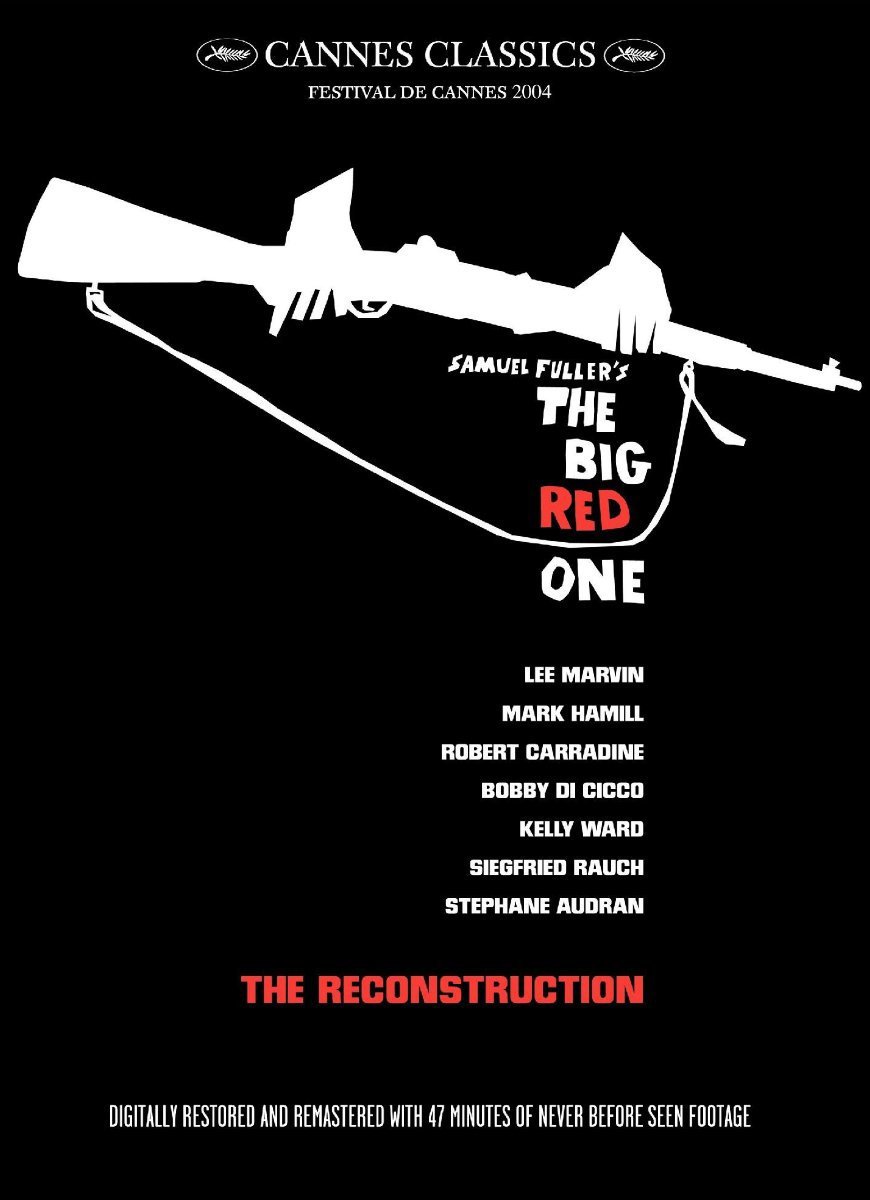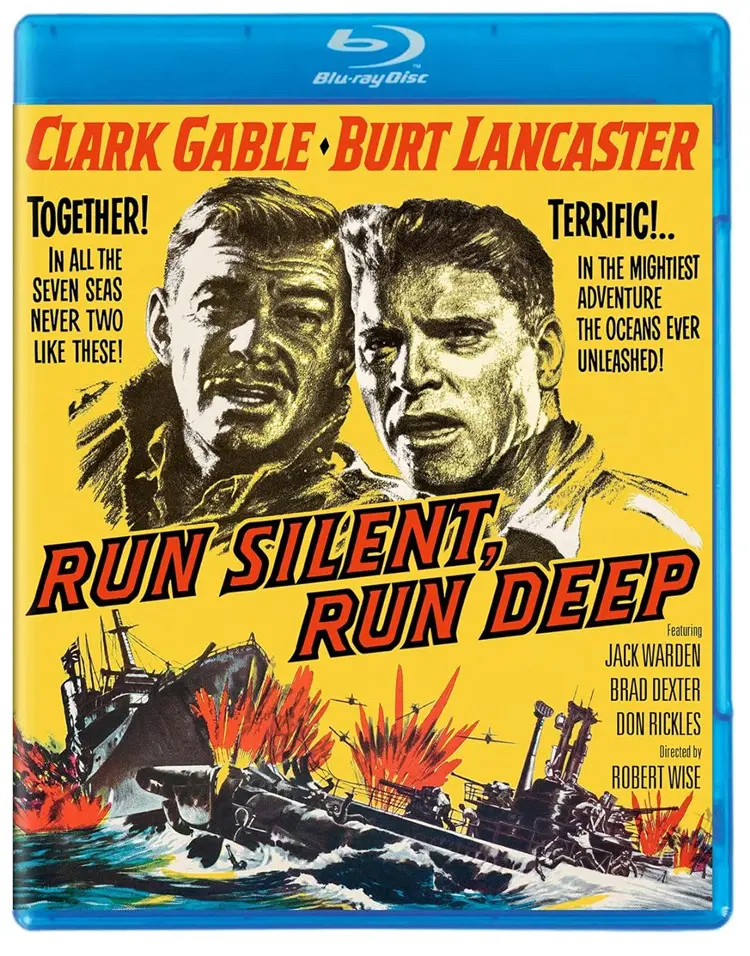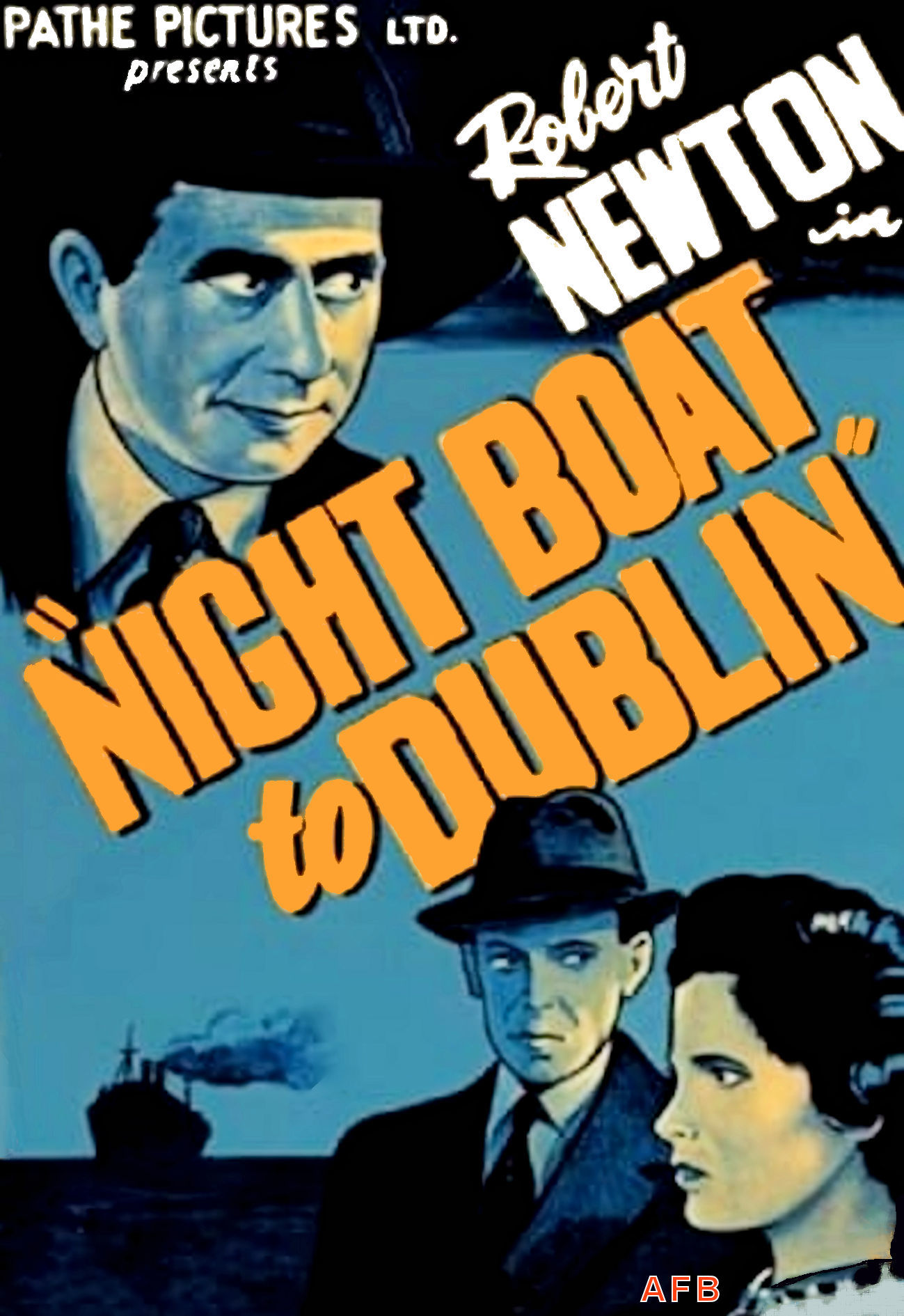
I’ve talked a little in this series about memory and the movies. Or rather, how this series continually brings up memories of both me watching certain movies or just knowing about their existence in various ways. That probably isn’t interesting to anyone but me, but I find it fascinating, and this is my blog so I’m gonna keep talking about it 🙂
My first memory of The Big Red One, Samuel Fuller’s movie loosely based on his experiences in World War II, is of the DVD cover. I was in Walmart many years ago looking through their movie selection and came across a copy of The Big Red One. It was an evocative cover that was mostly black with a big white outline of a rifle and the title was all in white except for the word “red.” Well, you can see what I mean up above.
I immediately wanted it. I read the back cover and it promised to be a full restoration of Fuller’s lost film. It had lots of extra footage. It was a masterpiece. That sounded great.
I put the film back. I’ve been burned before. The film sounded interesting but I wasn’t ready for another blind buy.
I haven’t really thought about the film since. Oh, every now and again it would pop up on a streaming service or whatever and I’d think about watching it. Then I’d find something else. And now, I’ve finally seen it.
It is pretty good. Unfortunately, I wasn’t paying attention and I watched the original, non-director’s cut which is missing something like 45 minutes of footage. I might go back and watch that version someday. But not anytime soon.
The film follows a man only known as Sergeant (Lee Marvin) as he leads a squad of infantrymen from the 1st Infantry Division (who were known as The Big Red One due to the patch on their shirts.)
It reminded me quite a bit of the HBO series Band of Brothers as it follows this squad From North Africa to D-Day, the liberation of France to a concentration camp. They deal with battles and injuries, death, and replacements. In its own way, it is just as episodic as that series.
It was made on a low budget and unfortunately, it shows. The battle sequences aren’t particularly exciting. There are quite a few characters, but none of them are all that memorable. Mark Hamill is second billed but he gets very few lines of dialogue. His performance is mostly reaction shots. Most of the other characters are indistinguishable. I’d be hard-pressed to tell you any of their names or what they did. Marvin is great and he gets almost all of the screen time. He’s a hard-worn war veteran (in an early scene we see him as a private in World War I), but he’s kind to his men.
There are some really wonderful scenes. One inside a mental institution stands out. And the D-Day landing involves the Sergeant sending his men, one by one, across the beach to try and blow up a barbed wire fence keeping everyone from advancing. One guy goes, gets shot and he sends another. Then another. And another. He calls them out by number, not by name. It is harrowing to watch. These men are literal cannon fodder. More meat for the grinder.
It very much feels like an incomplete film. I’d like to see the longer cut (which was put together from surviving footage based on Fuller’s notes, he was dead when it was done). Forty minutes is a lot of time for these characters to be better filled out and their lives explored.
This version isn’t enough for me to be begging to see even more of this film, and the reviews of the extended cut don’t call it a masterpiece, so I expect it will be a few years before I decide to go back. But it is an interesting film, and I’d be interested to see if any of my readers have seen the longer version.





 <
<